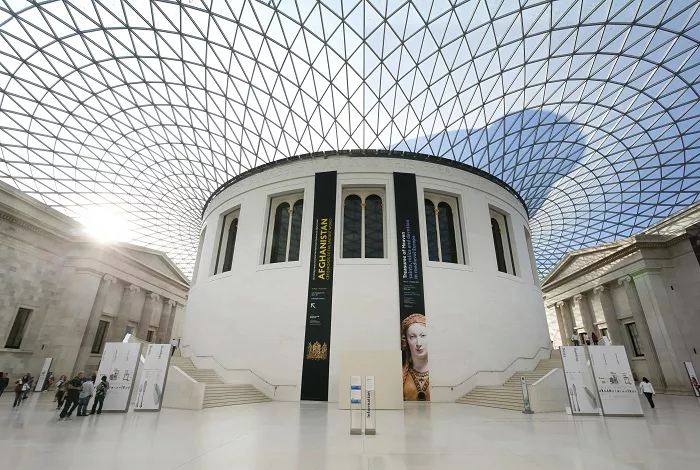The British Museum once again claimed the title of the UK’s most visited attraction in 2024, according to new statistics released by the Association of Leading Visitor Attractions (ALVA).
The renowned London museum welcomed nearly 6.5 million visitors last year, marking a significant 11% increase compared to 2023. This marks the second consecutive year the British Museum has secured the top spot, following a challenging period that included the alleged theft of almost 2,000 items from its collection and the departure of several high-profile officials, including former director Hartwig Fischer. Additionally, the museum remains at the center of a heated debate over the return of the Parthenon Marbles to Greece.
The ALVA report highlighted that London’s Natural History Museum took the second spot, attracting 6.3 million visitors in 2024, also reflecting an 11% rise from the previous year.
Other top attractions in London include the Tate Modern, which saw 4.6 million visitors, and the Southbank Centre, which recorded a notable 17% increase, surpassing 3.7 million visitors. The National Portrait Gallery, following its reopening in June 2023, enjoyed a remarkable 36% rise in attendance, drawing more than 1.5 million visitors. The Young V&A also saw a 47% increase, with nearly 600,000 visitors.
Outside of London, several prominent UK landmarks experienced growth in 2024. Stonehenge in Wiltshire saw a 3% rise, reaching 1.36 million visitors. In Scotland, the National Museum of Scotland in Edinburgh recorded 2.3 million visitors, making it the country’s most popular free attraction. Edinburgh Castle drew nearly 2 million visitors, remaining Scotland’s most visited paid attraction, while the National Galleries of Scotland saw a 9% increase in attendance.
Wales’ most visited attraction was St. Fagan’s National Museum of History in Cardiff, with 660,690 visitors, and Titanic Belfast in Northern Ireland saw a 10% increase, attracting 881,573 attendees.
ALVA noted that, overall, London-based attractions experienced a 3% rise in visitors, while Scottish and Northern Irish venues saw an average increase of 3.2%. The East Midlands region saw the highest growth, with a 4.5% increase year-on-year.
In a statement, ALVA Director Bernard Donoghue reflected on the year’s results, noting that while 2024 showed steady growth, visitor attractions faced a financially challenging landscape, impacted by the ongoing economic recovery post-pandemic, the cost-of-living crisis, and rising business costs. Despite these challenges, Donoghue emphasized that cultural and heritage venues remained popular with the public, with people prioritizing visits to their favorite attractions.
“Visitor attractions have demonstrated resilience in the face of financial pressures, with many continuing to show growth and proving that cultural and leisure experiences still play an important role in people’s lives,” Donoghue added.

